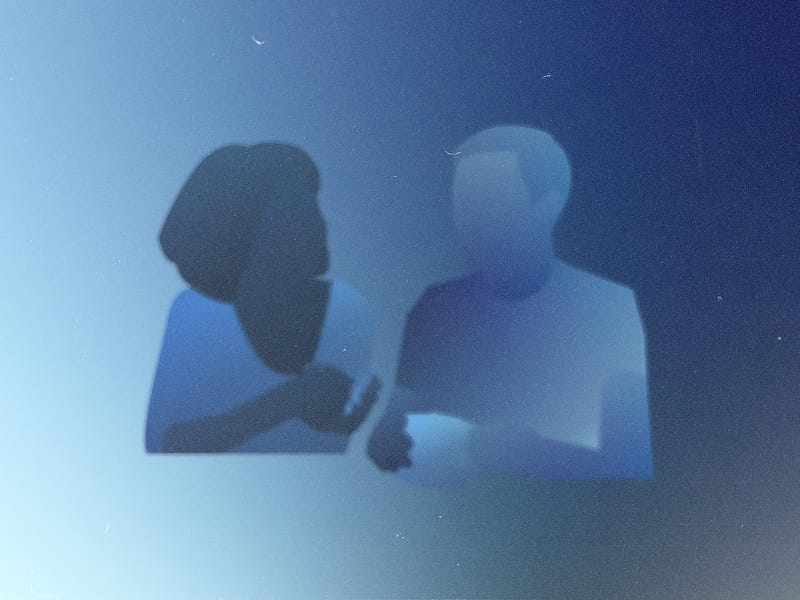How to Be Vulnerable
Knowing yourself is the first step to knowing others.

Knowing yourself is the first step to knowing others.
In the words of author and researcher Brené Brown, vulnerability is “uncertainty, risk, and emotional exposure.” Like resilience, vulnerability is important to cultivate. Being vulnerable can help you form deeper and more long-lasting relationships with others. Being vulnerable is the ability to be authentic with others, even when the outcome is not positive. Vulnerability requires one to be present and have self-compassion.
Vulnerability is an internal process as much as an external one. Vulnerability means sharing your feelings authentically. But, in order to be vulnerable with others, you must first do internal work to better know and accept yourself.
Vulnerability is strength
Conflating vulnerability with weakness is a mistake people often make. But vulnerability is about both trust and boundaries. Cecille Ahrens, LCSW, CEAP, a therapist and founder of Transcend Therapy in San Diego, says, “To be vulnerable means to be open and honest about our inner life, but this doesn't mean we can't have boundaries… Knowing when to draw boundaries, saying ‘ouch’ when something hurts and expressing our discomfort are all examples of vulnerability.” Vulnerability is the authentic expression of self.
And that expression can be done anywhere, even in environments where it seems impossible. According to Nicole M. Piemonte, Ph.D. and author of Afflicted: How Vulnerability Can Heal Medical Education and Practice, vulnerability is key to creating compassionate medical care. “Too often, we conflate professionalism with stoicism or detachment,” says Piemonte. “When we think of professionalism more as connection, compassion and care, we can start infusing—normalizing— vulnerability in the workplace.”
Vulnerability is about seeing others and being seen by others. “How can you see someone else if you don’t allow yourself to be seen? Connection is what matters most, and connection requires vulnerability,” Piemonte says. Ahrens agrees, adding, “It is only through healthy vulnerability that we can truly heal and be intimate with others.”
What to do
The key to being vulnerable with others is knowing yourself. Ahrens says, “Vulnerability is about owning our story, which in turn allows us to experience personal power.” Studies show it can feel like weakness to express vulnerability. But when we see others being vulnerable, we respond positively.
We may feel vulnerable when we ask for help, admit to something personal or express a boundary. Setting a boundary or having a healthy confrontation can be difficult and may make one feel exposed. When having hard conversations, you can still practice vulnerability. “When our stories and fears no longer own us, then we are essentially free,” Ahrens says.
Push past your initial discomfort with self-disclosure to acknowledge the reality of your own story. To be truly vulnerable, you must be in touch with yourself. Know your strengths and weaknesses. Give yourself time to process your trauma. Give yourself the space and tools to feel your feelings. Reflect on the feeling. Say to yourself, “I am feeling _______,” and take a breath. Breathe in and out a few times, rather than immediately trying to move on from your own discomfort. Give yourself time to journal or process the feeling another way. Most of all, remember that feelings pass.
Vulnerability is expressing yourself authentically. Rather than focusing on the potential or imagined reactions of others, focus on expressing yourself honestly. If someone has hurt you via their words or actions, don’t be afraid to say it. If you feel close and connected with someone, express it. When you operate from a place of authenticity, you show yourself to be confident and caring. You are confident enough to name your own feelings, and you care enough about your relationships to share those feelings. This will deepen your connections with others.
What not to do
Don’t avoid processing your feelings. Our culture doesn’t encourage us to slow down, but in order to cultivate vulnerability, we need to take the time to process our feelings and trauma. If you are having difficulty processing your feelings on your own through meditation, journaling or other practices, it may be time to seek out professional help. A one-on-one therapist can help improve your relationship with your own feelings and, in doing so, improve your ability to practice vulnerability.
Summary
Cultivating vulnerability is a long (and sometimes life-long) journey. When we are unafraid of moving through the world with honesty, we are able to be vulnerable. Vulnerability is the confidence to say, “This is how I feel. This is how your actions made me feel.” And, by being vulnerable, we’re better able to connect with those around us.
There are a few keys you need to remember as you begin your journey to becoming a person who regularly practices vulnerability.
— Vulnerability is not weakness; it is owning your personal power
— Give yourself the time, space and tools to heal your own trauma
— Connection and vulnerability go hand-in-hand